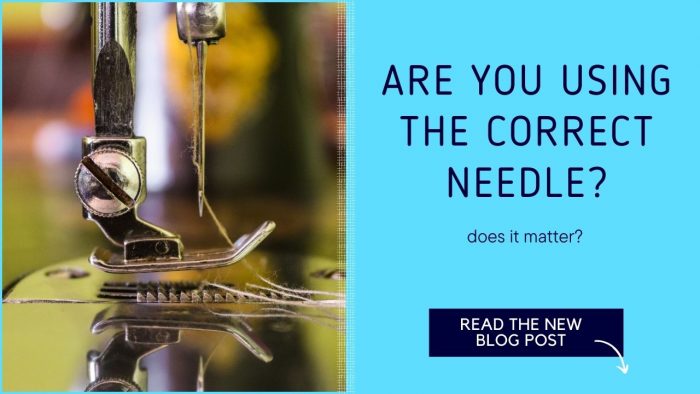
My first proper sewing machine, a Bernina 930 Record, was gifted to me by my grandmother. When she gave me this excellent machine, she only gave me one piece of advice: “Always use the correct needle for the job”. She’s a very accomplished sewist so I took this advice seriously. Still, when I started sewing, I broke needles regularly and my stitching never looked neat. Eventually I realised that I was the problem, not the machine.
In this post I’ll discuss needles in relation to sewing bags (garment sewing is an entirely different subject) on a domestic sewing machine. Links are included to Schmetz needles which is the brand I use most frequently, though I’m not affiliated with them. Some links may be Amazon affiliate links. As always, please leave a comment if you have additional tips to share, I love to have as much input as possible for these posts!
“Can’t I just use a universal size 80 needle for everything?”
If that’s the way you want to go, you can. But for the best results, use the right needle for the job. Using the correct needle will make your project look the best it can and it’ll also make your sewing a more pleasurable experience. Mismatched needles and fabrics can cause a variety of headaches including wonky looking stitching, skipped stitches, and fabric not moving through the machine correctly.
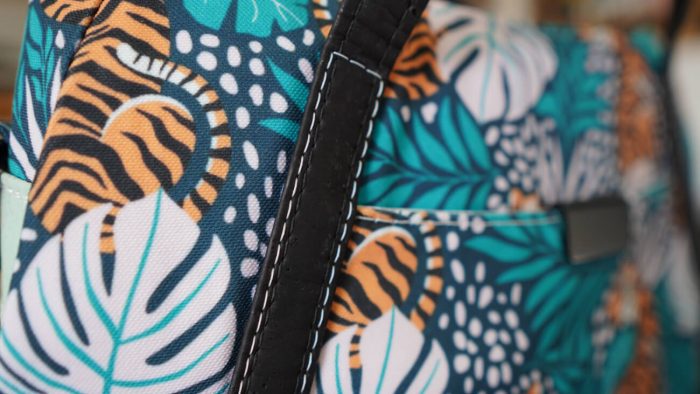
1. What type of fabric are you using?
There are different needles for different fabrics and there’s a very good reason for it! For example:
- Jeans/denim needles are ideal for heavy fabrics such as canvas and denim because they have a stronger shank and a sharper point to break through the fabric. This allows them to sew through multiple layers of denim without bending or breaking. However, using them on light or thin fabrics could result in skipped stitches or visible puncture holes on the fabric
- Leather needles have a chisel point which is designed to cut the fabric as it penetrates it so they are only suitable for genuine leather and should never be used on textiles or artificial leather. The sharp point can break the threads that form the backing of artificial leathers and this could lead to problems
- Microtex needles (aka “sharp” needles) have a very slim sharp point. They’re perfect for precise stitching and great for use on cork and artificial leather. They also have a special coating that works better with double sided tape. However, because of the slim point they can wear quicker and break more easily so be sure to replace your needle more often
- “Super” universal needles have a non-stick coating that’s perfect for sewing through spray adhesive or double sided tape. The blade is reinforced which makes them stronger when sewing through heavy fabrics, and they have a larger eye for easier threading. These are my favourite needles but beware, they’re more expensive than standard universal needles
- Standard universal needles can be used with woven fabrics and synthetic fabrics. They’re a great all round needle, but won’t necessarily give you the outstanding stitching you desire if you’re using denim, cork or artifical leathers
Try out different needles on the fabrics you’re using. See the difference in the stitching and keep notes of your favourite results.
2. Size does matter
When you’re chomping through a lot of layers, change your needle size. For bigger jobs, you need a bigger needle. You can sometimes get away with using a smaller needle, but using a bigger needle can make the job easier and take some of the strain off your sewing machine. The correct size needle will also help you avoid skipped stitches and ensure your stitching is neat. Using a needle that’s too big for the job is also a no-no as this can leave visible puncture marks in your stitching.
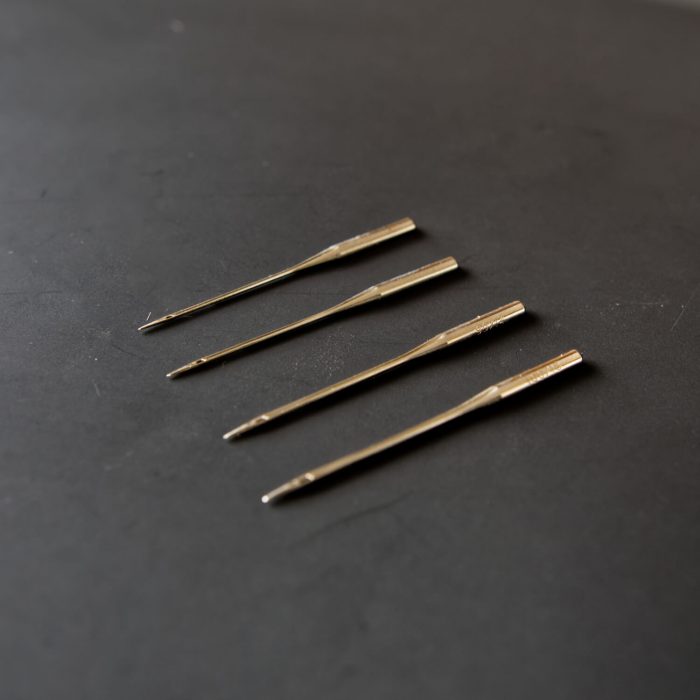
3. Is your needle blunt?
How often should you change your needle? I change mine for most projects. The general recommendation is to change your needle after 4-8 hours of sewing. I usually wait and change it before doing the final topstitch on a bag. That’s when I think it’s most important to have a fresh, sharp needle. Using a blunt needle can result in messy stitching, skipped stitches and forcing your sewing machine to work harder than it needs to. If you can’t remember when you last changed your needle, do your machine a favour and change it now. You might be surprised how great your stitching looks after the change!
4. Needles vs threads
The type/size of thread you’re using will also impact the needle size. If you’re using a weightier thread such as Tex 40 or higher, you’ll need to make sure you’re using a size 80 or larger needle. Using a small needle with a large thread can cause the thread to shred or other issues. If your thread breaks unexpectedly, it’s worth checking the needle you’re using as this could be the cause.
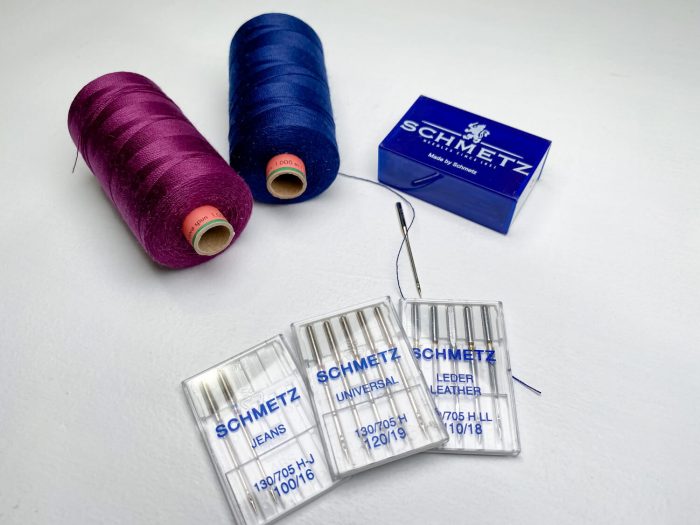
5. Does your project include adhesive?
Did you know that your needle can affect how your machine sews through adhesives? When bag making, we often use spray adhesives, fabric glue or double sided tape. Microtex and “Super” Universal needles have a special coating which allows them to pierce the fabric without being affected by the adhesive. Without this special coating, you may find that your needle is “gummed up” by the adhesive and causes skipped or uneven stitches.
6. Does brand matter?
That’s a difficult question to answer, but I think it’s probably a yes. I previously used a different brand of needle, one available in my local sewing shop, but I regularly broke needles. One day I was topstitching a bag and broke three needles in a row. It wasn’t a difficult bag and I couldn’t figure out what I was doing wrong. I decided to try the exact same type and size of needle, but a Schmetz one, and was then able to complete the project without a single break. Now I only use Schmetz needles and I can’t remember breaking a single needle in recent months. It could be that certain brands work better with certain sewing machines, but it’s hard to know for sure as I haven’t sewn on a large variety of machines.

Using the correct needle will make your sewing easier and more enjoyable. It will also ensure your stitching looks outstanding. If you have a needle brand or type that works particularly well for you, please let us know in the comments!
For weekly bag making tips, make sure you’re subscribed to our mailing list.
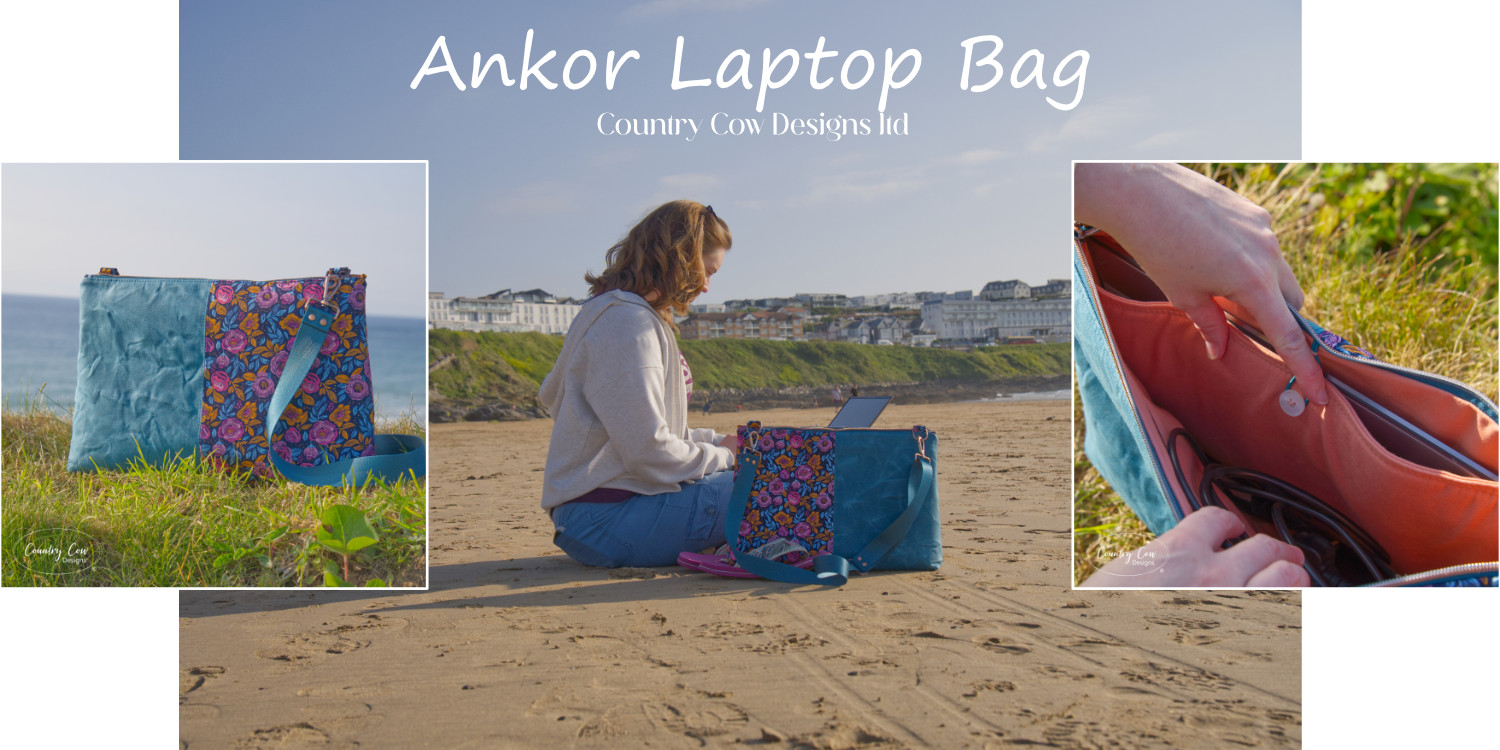

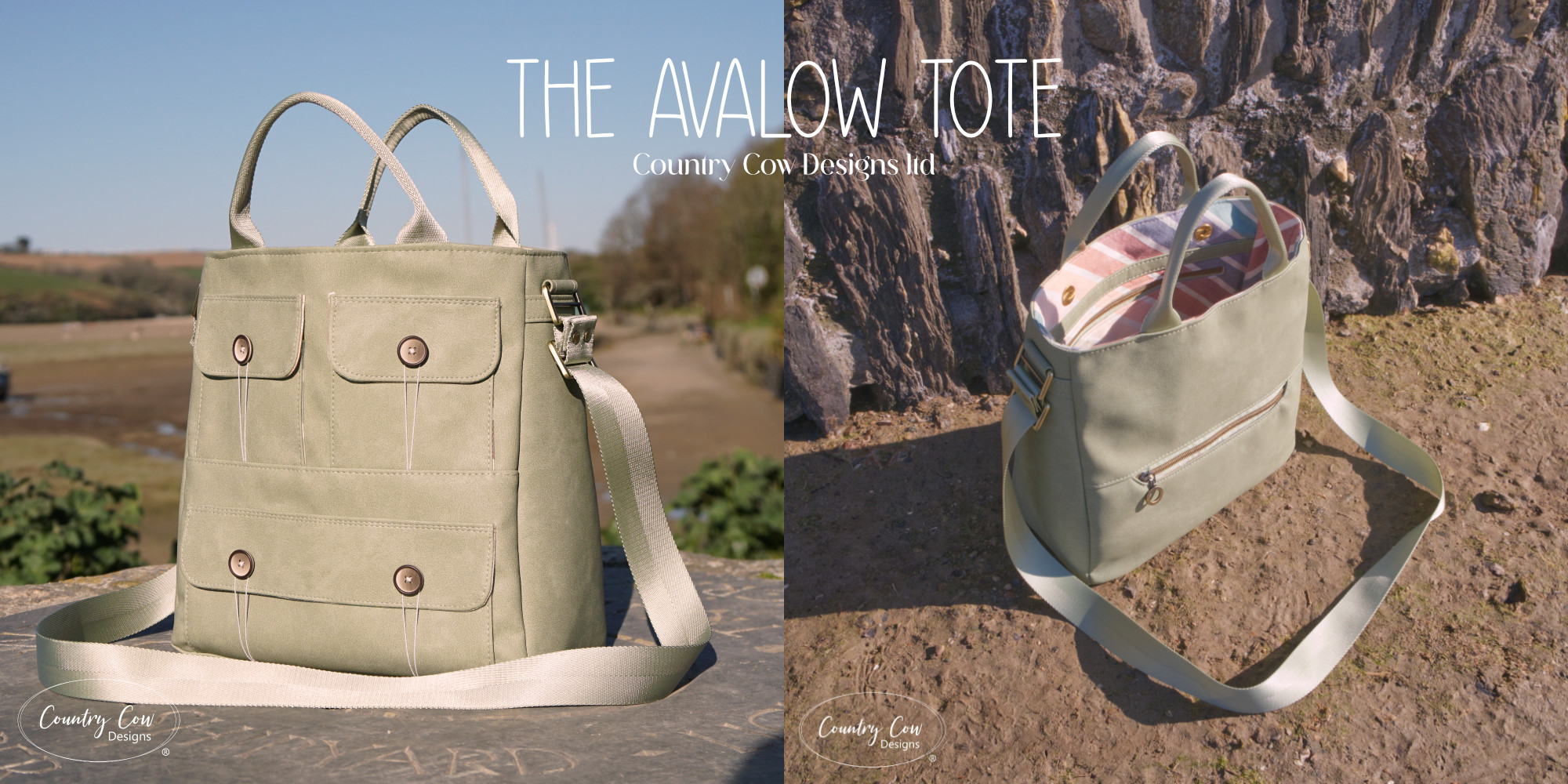
thank you, this was very useful, I didnt know the Microtex was for cork def going to try that now.
You are so correct! Needles & threads are the most important things when sewing!
Thanks for this info, Jo, much appreciated. I’ve been using DST on an advent calendar which kept gumming up my needle – I’ve just ordered the Super Universals after reading your blog post – thank you!
Very concise and helpful. Will print and keep near my machine. Many thanks!
This is a great resource, Jo!
Will also print out! Excellent information. Thank you
Thank you for this useful information
This is such a good idea to do this blog of great advice and useful information. Thank you.
(I do have one question though. What are skipped stitches?)
Skipped stitches is when your stitches aren’t consistent, so you’ll have some stitches longer than others because it hasn’t formed the stitch properly. You’ll end up with some stitches that are two or three times the length they should be and very loose. It makes your stitching look quite messy. If you search for “skipped stitches” on Google, it should show you some photo examples. You’ll probably recognise it when you see it. I think most of us have had it happen at some point 😆
Yet again a very informative piece. I’d be interested on Adam’s view about needles too as I sometimes think I should change them out as some faux leathers vary in thickness.
Yep, Adam agrees with you. He changes his needle size depending on the thickness of the faux leather he’s using. Also depending on the number of layers that he’s going through too, so he’ll change to a larger needle for the final topstitch of the bag if there’s lots of layers of faux leather
Good blog – recently I made a bag with Harris Tweed and suffered from skipped stitches on the final topstitching. The Harris Tweed was fused to a woven fusible and sewn to a foam stabilizer and cotton (interfaced) lining. I was using an Organ 90-14. The needle worked great on the faux leather straps (Mora from Emmaline Bags). Any suggestions for the type of need to use on Harris Tweed?
I’m not sure about Harris Tweed. I’ve never sewn with it, but assuming it’s quite dense? Then possibly a denim/jeans needle would work well for it. I imagine it was quite thick at that point, so you could change to a size 100 needle for the topstitching, that may make a difference too.
Thank you so much for this interesting blog. I do not normally read all the the way through most blogs but yours are so informative that I have read thru all of them so far. You have given us a wealth of information especially to a new sewist and bag maker. I found bag making after I came across one of your YouTube’s and I am so thankful I did. I got into sewing because I am a surface designer and love to design fabric. Now I get to use my own fabric to sew my bags.
Thank you, that’s such a lovely comment!